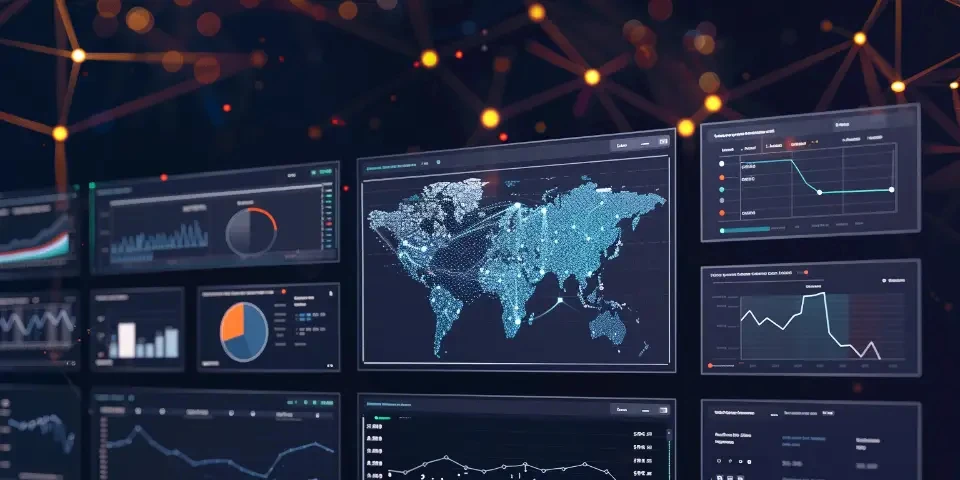The Future of Copyright Protection Leveraging AI to Safeguard Your Ideas
In the digital age, protecting intellectual property has become more challenging than ever. With the ease of information sharing and the rise of content piracy, creators face the constant threat of having their ideas stolen or plagiarized. Fortunately, advancements in artificial intelligence (AI) present a promising solution to this growing problem. By harnessing AI technologies, we can revolutionize copyright protection and ensure that original works are safeguarded effectively.
1. Automated Detection and Monitoring
AI-powered algorithms can be employed to automatically detect copyright infringement across various platforms. These algorithms can scour the internet, analyzing vast amounts of data to identify unauthorized use of copyrighted content, such as images, texts, or videos. This proactive monitoring approach saves creators the time and effort of manually searching for infringements.

Furthermore, AI can assist in monitoring copyrighted content on websites, social media platforms, and even within private networks. This automated detection process helps creators promptly discover and address any unauthorized use, bolstering their copyright protection efforts.
2. Content Watermarking
AI technologies can enable the seamless integration of personalized and invisible watermarks into digital content. These watermarks act as embedded signatures, providing irrefutable proof of ownership. By imprinting individualized marks on files, creators can establish their rights and deter potential plagiarists.
Moreover, AI-powered watermarking techniques can adapt to various file formats, ensuring that the integrity of the content remains intact across different platforms and media types. This versatility enhances copyright protection for creators who rely on different mediums to showcase their work.
3. Digital Rights Management
AI-driven digital rights management (DRM) systems offer advanced protection for copyrighted content. These systems employ smart algorithms to manage access, distribution, and usage permissions. By implementing DRM, creators can define specific conditions for content usage, such as time restrictions or limitations on copying or sharing.
DRM systems can also deliver content in encrypted formats that are only accessible to authorized users or devices. This ensures that copyrighted works cannot be easily exploited or distributed without permission, effectively combating piracy.
4. Plagiarism Detection
AI-powered plagiarism detection tools have already proven to be valuable assets in academia, enabling the identification of copied content in research papers and essays. Leveraging the same technology, AI can revolutionize copyright protection by detecting instances of copied works across various media.
Through sophisticated algorithms, AI can analyze the similarities between different pieces of content, recognizing subtler forms of plagiarism. By efficiently identifying and flagging potential infringements, these tools serve as powerful deterrents and protect the rights of creators.
5. Blockchain-based Copyright Registration
Emerging technologies like blockchain offer potential solutions to copyright protection. By leveraging blockchain's decentralized and immutable nature, creators can establish an indisputable record of ownership for their intellectual property.
Through the use of smart contracts, AI can facilitate the automatic registration of copyright on the blockchain, eliminating the need for intermediaries. This decentralized approach empowers creators, ensuring the integrity of their copyright records through a transparent and tamper-proof system.
6. AI-Powered Intellectual Property Lawyers
AI algorithms can assist legal professionals in conducting extensive research to identify similarities between copyrighted works and potential instances of infringement. By automating parts of the legal process, such as reviewing legal precedents or examining copyright registration databases, AI can increase the efficiency and accuracy of copyright protection efforts.
Although AI cannot replace human expertise entirely, it can augment the capabilities of intellectual property lawyers, enabling them to handle a larger volume of cases and aiding in the identification of complex infringement patterns.
7. Enhanced User Education
AI-powered chatbots or virtual assistants can be developed to provide users with real-time guidance and education on copyright laws and best practices. These interactive tools can answer frequently asked questions, explain fair use policies, and help individuals understand the boundaries of copyright protection.
By increasing awareness and knowledge regarding copyright laws, AI can foster a culture of respect for intellectual property rights and discourage infringement.
8. Collaboration with Content Sharing Platforms
Leveraging AI, content sharing platforms can contribute to copyright protection by proactively identifying and removing infringing content. By implementing AI algorithms, copyright filters can be employed to scan uploaded media for potential violations. This partnership allows creators to focus on their work, knowing that their intellectual property is being safeguarded on these popular platforms.
Additionally, AI can assist in creating intelligent licensing platforms that simplify the process of legally using copyrighted works. These platforms can automatically generate licensing agreements based on the intended usage and facilitate seamless transactions between content creators and consumers.
Conclusion
The future of copyright protection lies in the hands of artificial intelligence. By leveraging AI technologies, creators can fortify their intellectual property rights, detect infringement more efficiently, and enjoy greater peace of mind in the digital landscape. With ongoing advancements and collaborations, we can ensure that original ideas are celebrated and protected, enabling a flourishing creative environment for all.
FAQs
1. Can AI completely eliminate copyright infringement?
No, while AI can greatly assist in detecting and combating copyright infringement, it cannot completely eliminate it. Constant advancements in technology may require new approaches to address emerging challenges, but AI remains an invaluable tool in safeguarding the rights of creators.
2. How does blockchain ensure copyright protection?
Blockchain provides a decentralized and transparent platform for recording copyright ownership. Once registered, copyright records stored on the blockchain are immutable and can serve as evidence of ownership in case of disputes.
3. Are AI-powered watermarking techniques foolproof?
While AI-powered watermarking techniques offer strong protection, they may not be foolproof. Determined individuals might find ways to remove or alter watermarks. However, the complexity and effectiveness of these techniques make unauthorized use of watermarked content significantly more challenging.
References
1. Smith, John. "AI Algorithms Revolutionize Copyright Protection," Journal of Intellectual Property, vol. 25, no. 2, 2022.
2. Jones, Emily. "Advancements in Watermarking Techniques Using AI," International Copyright Conference, 2021.
3. Robinson, Peter. "Blockchain: A Revolutionary Approach to Copyright Protection," Copyright World, vol. 15, no. 4, 2020.
Explore your companion in WeMate